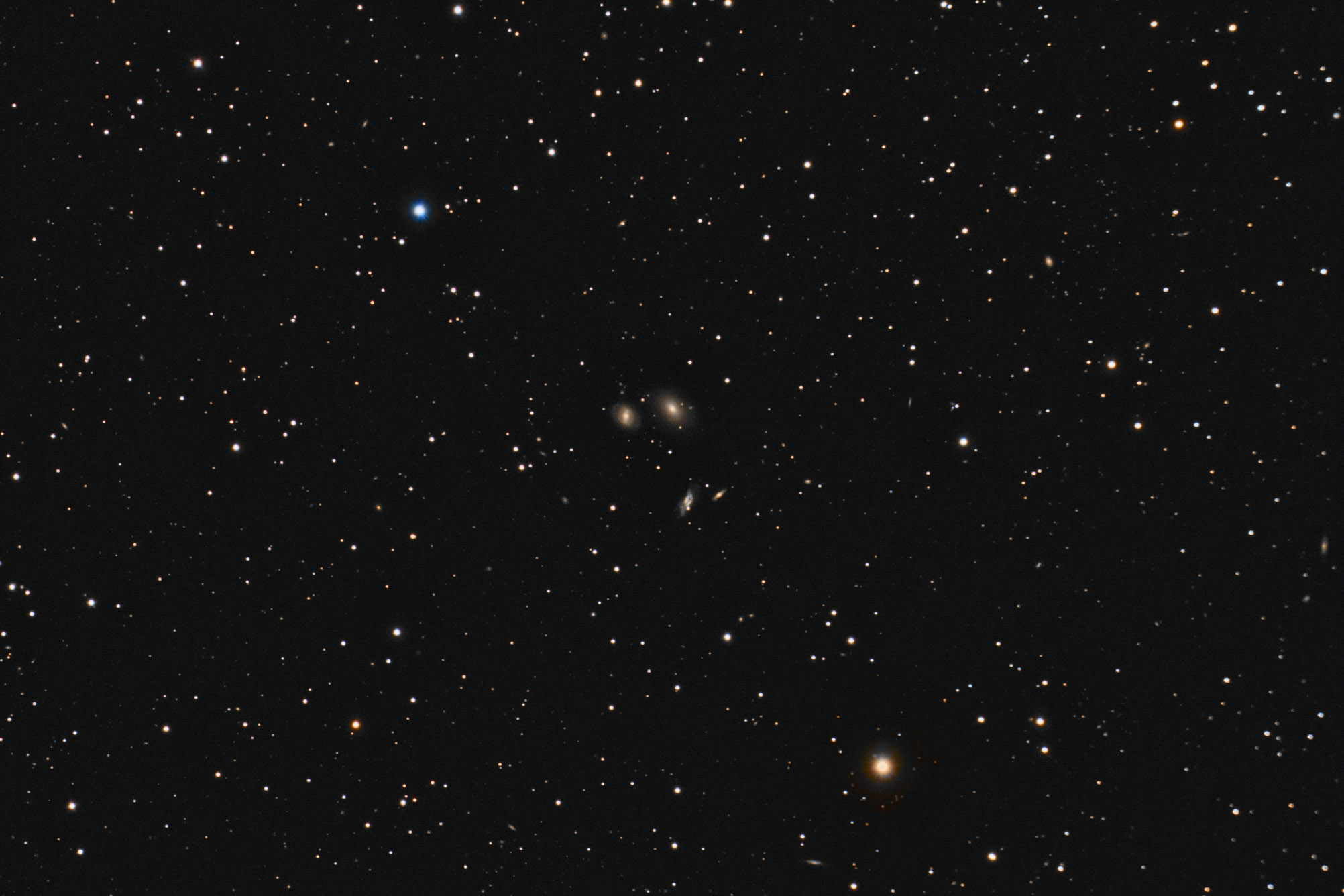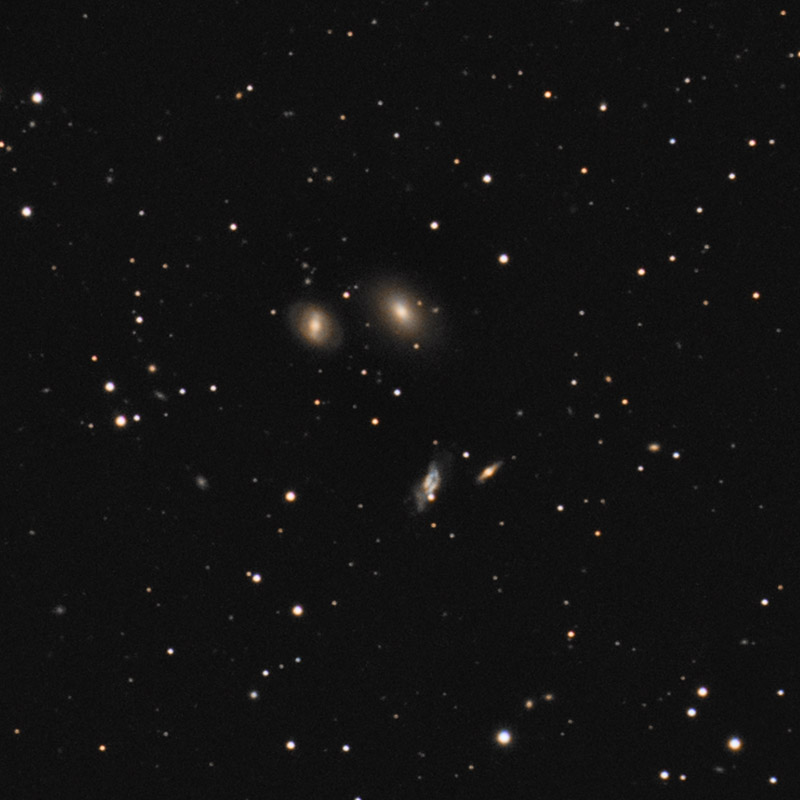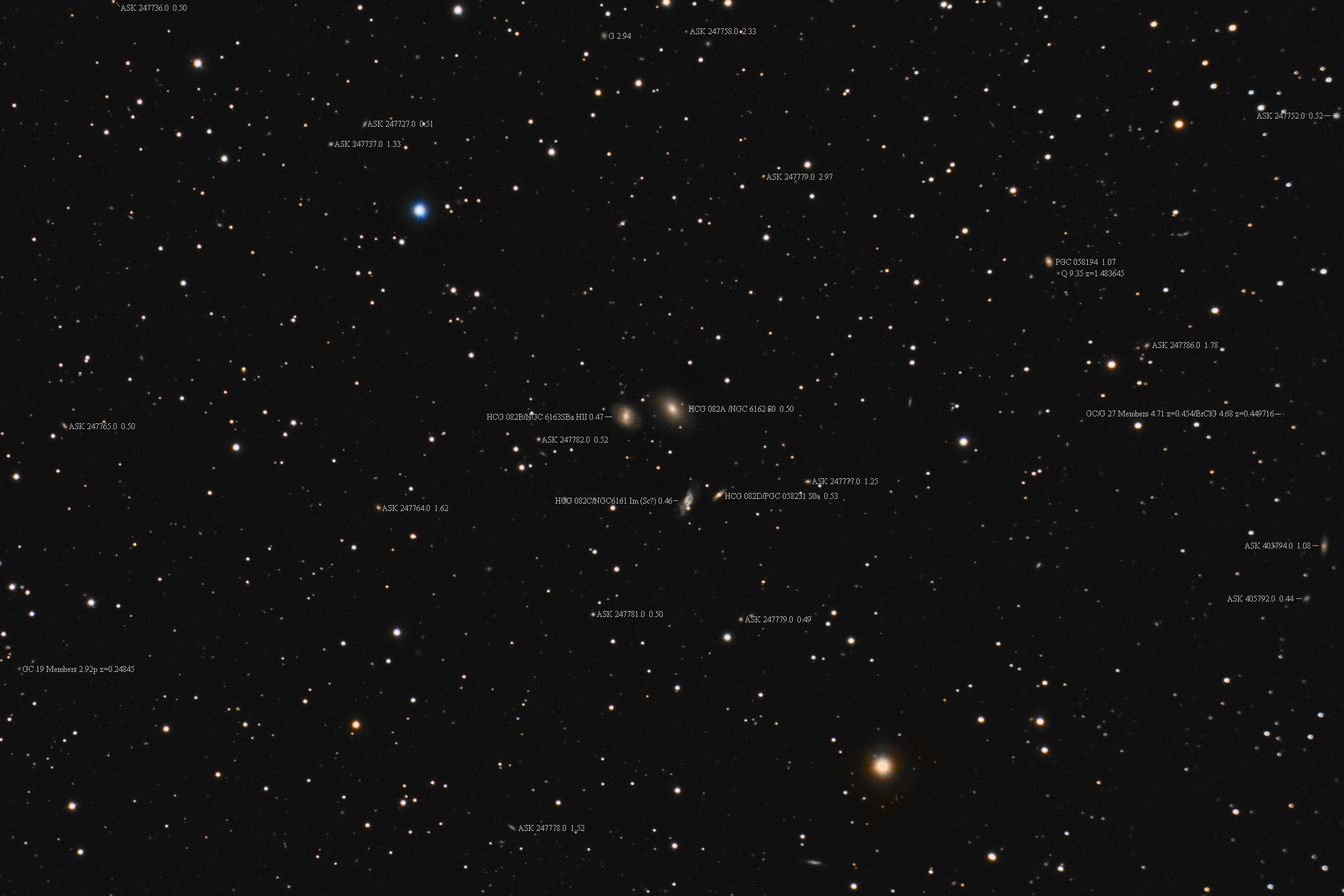| Description | Images |
Object name: HCG082Designation(s): HCG082, NGC6161, HCG 82 consists of 4 galaxies in far western Hercules west of the Keystone. It consists of 3 NGC galaxies and one PGC galaxy, NGC 6161-6163 and PGC 58231. The three NGC galaxies were discovered by Édouard Stephan on June 30, 1870. Hickson had no distance data when compiling his 100 groups. He assumed most would be related due to their close proximity to each other. In this case, they may be related though their redshift shows a rather wide range of values from about 460 million to 530 million light-year distance, a 70 million light-years difference. This is probably due to their orbital velocities around a common center of gravity and not a real distance difference. An average would put them just under a half billion light-years distant. I measure the group as being about 530,000 light-years across assuming they are all at about the same distance. NGC 6162 is the big one at 185,000 light-years across. NGC 6163, thanks to its wide "wings" is 125,000 light-years in size. NGC 6161, thanks to its plumes is nearly as large as NGC 6162 at 180,000 light-years though I suspect its mass is much less. Also, this size argues strongly against it being an irregular galaxy though its core region with the dust lane is only 65,000 light-years in diameter. PGC 58231 is the baby also at 65,000 light-years. Still a respectable size for a spiral galaxy. Related Designation(s):2MASS J16282063+3248381, 2MASX J16282062+3248380, 2MASXi J1628206+324837, AKARI J1628204+324843, ASK 247783.0, CGCG 1626.4+3255, CGCG 168-013, FIRST J162820.6+324838, HCG 082, HCG 082C, HCG082, IRAS 16264+3255, IRAS F16264+3255, KUGX 1626+329B, MCG +06-36-046, NGC 6161, NGC6161, NSA 147013, NVSS J162820+324837, PGC 058235, SDSS J162820.56+324834.8, SSTSL2 J162820.62+324838.1, WBL 615, WBL 615-001, [RPG97] 391, | Permanent link: https://images.mantrapskies.com/catalog/OTHER/HCG082-NGC6161/NCG6161L4X10RB2X10G1X10.JPG |


